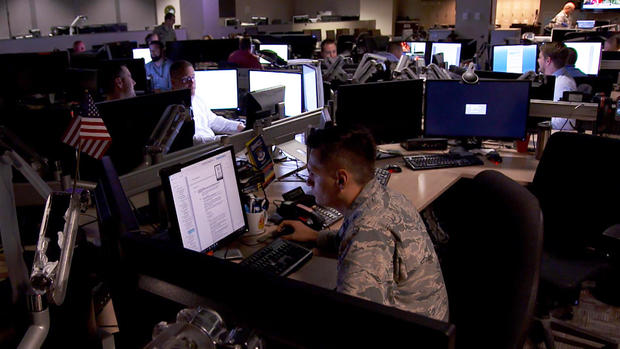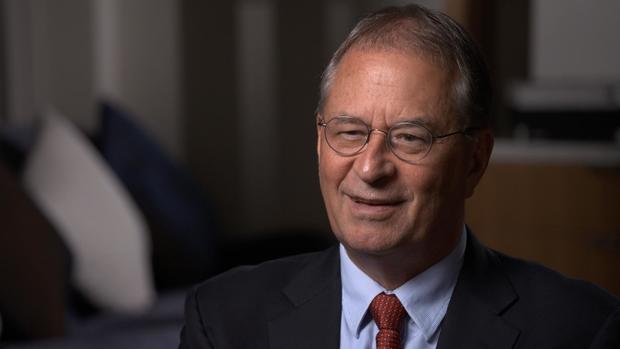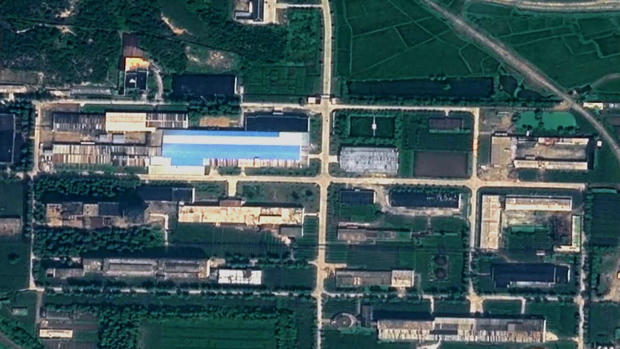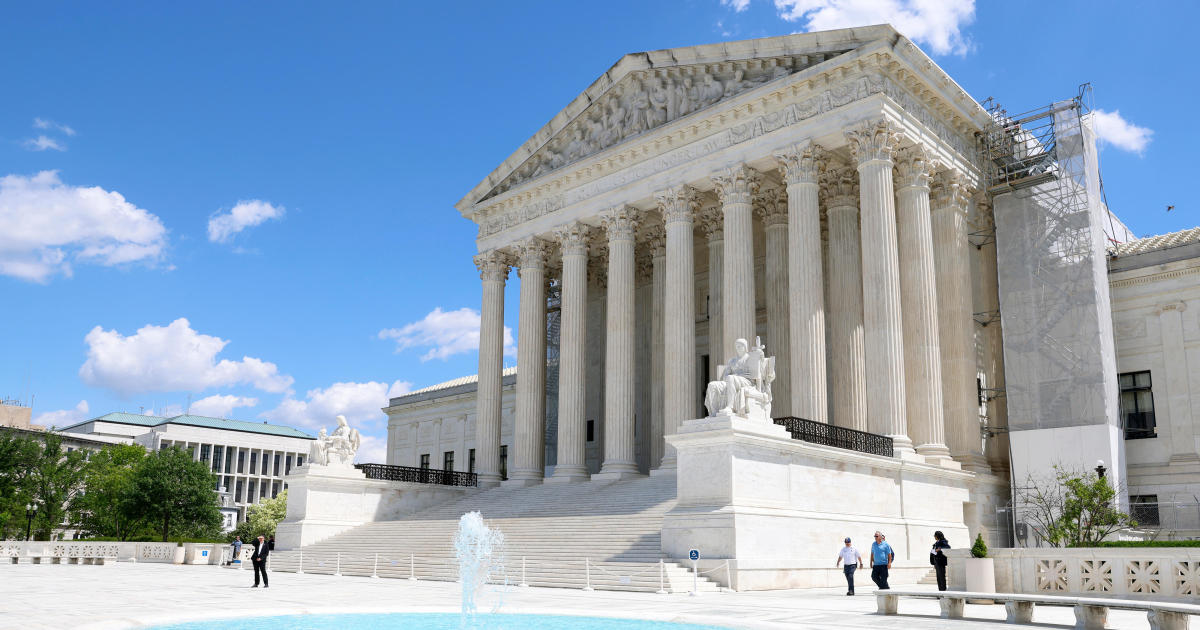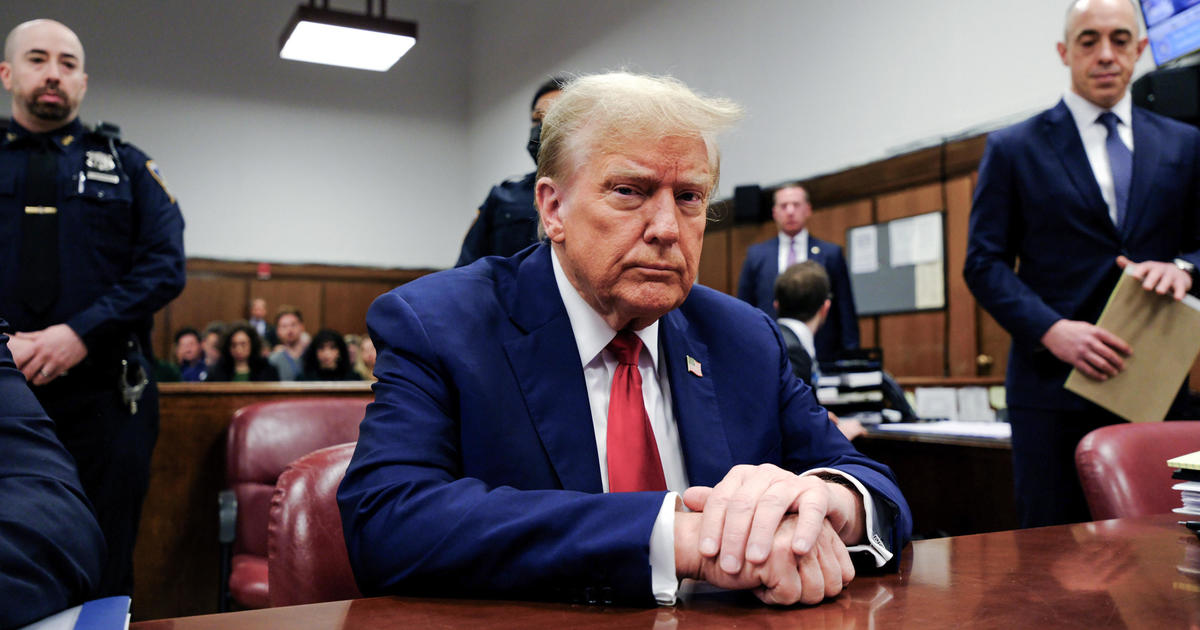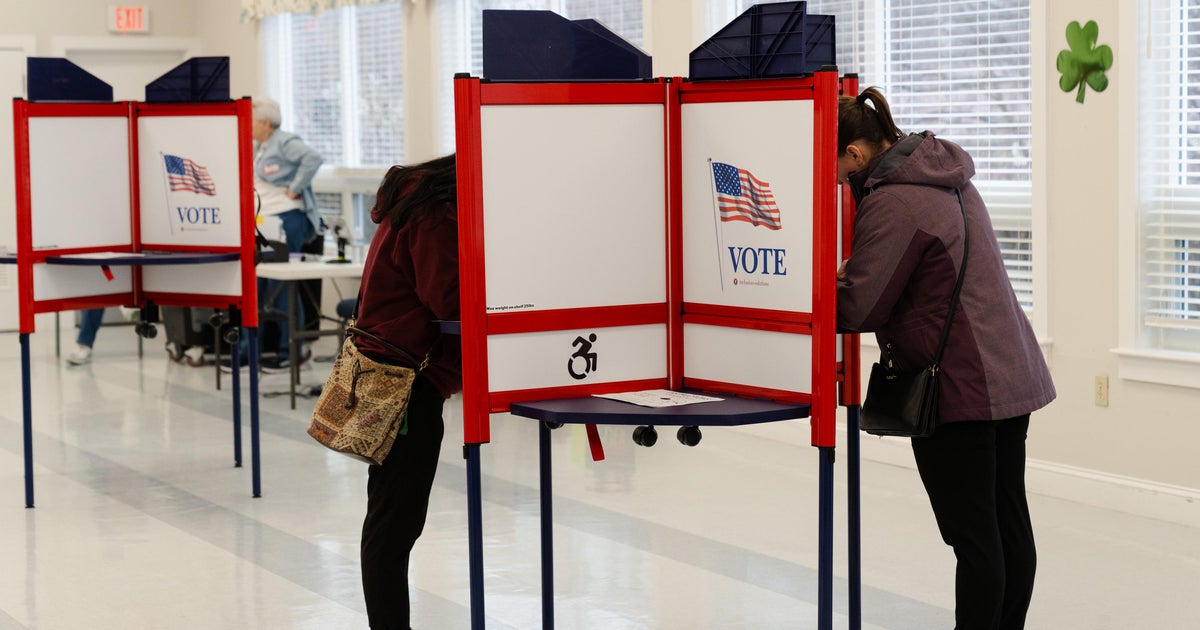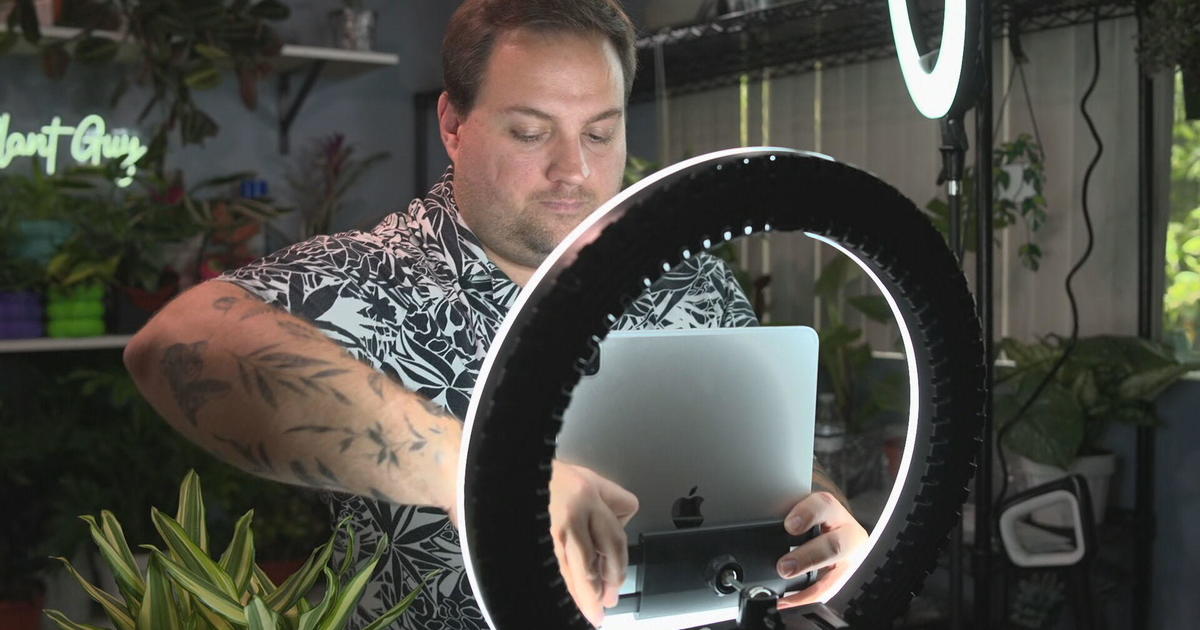North Korea summit: What's at stake when President Trump meets with Kim Jong Un?
Even attempting a summit between President Trump and North Korea's Kim Jong Un is surely one of the greatest high wire acts in diplomatic history -- two unpredictable leaders meeting in Singapore to negotiate the total elimination of what just last year was considered the gravest threat facing the United States. The stakes couldn't be higher. Mr. Trump is demanding the complete dismantlement of North Korea's nuclear weapons program. To Kim Jong Un those weapons -- the nuclear warheads and the missiles that would carry them -- are his country's most valuable possession. He is being asked to lay all his nuclear secrets on the table. As we reported in previous stories for 60 Minutes, U.S. Intelligence agencies have expended enormous effort trying to uncover those secrets as North Korea developed not only a nuclear arsenal but the capability to reach the United States.
At the National Air and Space Intelligence Center -- NASIC for short -- more than 100 photo interpreters, engineers, rocket scientists and intelligence analysts pore through reams of data collected every time North Korea launches a missile. Last summer, says NASIC commander Sean Larkin, the North Korean threat went to a whole new level.
Sean Larkin: They demonstrated the ability that they could reach the continental United States.
David Martin: The lower 48?
Sean Larkin: Yes.
There were two tests in the month of July. Both were launched at a very high angle so did not go far out to sea. But once NASIC crunched the numbers there was no doubt, had they been fired on a standard trajectory they could have reached California and beyond.
Sean Larkin: Math is our secret weapon so there's lots of things that go into an ICBM or other types of weapons systems that simply -- even if we don't have the pieces of the puzzle we can do the math and figure out what's missing.
This is a computer simulation of the weapon the North Koreans call "The God of War" -- an intercontinental ballistic missile.
Jeremy Suel: Well, this is the actual code that we develop.
It was produced by Jeremy Suel and his team of analysts at NASIC.
David Martin: So, can you take me through what this would look like on a flight?
Jeremy Suel: Yes, the first stage of the system is there to get it off the ground, get initial motion. But then it will drop that stage.
After the missile's engines have sent it into space all that is left is the re-entry vehicle. A warhead would be inside as gravity pulls it back to earth.
Jeremy Suel: You're at the mercy of the atmosphere at that point. You're slamming into it at many thousands of miles per hour, so that will have tremendous forces imparted on the- the re-entry vehicle.
David Martin: And what kind of temperatures are we talking about?
Jeremy Suel: Many thousands of degrees.
North Korea cannot attack the U.S. with nuclear weapons until it develops a re-entry vehicle that can stand that kind of heat.
Hugh Griffiths: This is the setup before the test.
Hugh Griffiths is head of the team which monitors the North Korean missile program for the U.N. Security Council. He says these pictures released by the regime two years ago were an attempt to prove it had already succeeded. A re-entry vehicle was subjected to a rocket engine blast.
David Martin: Is that a realistic test?
Hugh Griffiths: We assessed that it wasn't sufficiently realistic to be credible.
David Martin: Because the rocket engine does not create enough heat?
Hugh Griffiths: Correct. The heat produced by the rocket engine is not sufficient to mimic what this would experience reentering the earth's atmosphere.
North Korea released a picture of the scorched re-entry vehicle. And this one of Kim Jong Un being shown how little had been burned away.
Hugh Griffiths: The idea of this narrative is to prove that yet another requirement of the nuclear ballistic missile program has been achieved.
Just after Thanksgiving last year, North Korea test-fired an even bigger ICBM. This one, had it been fired on a standard trajectory, could have reached anywhere in the United States.
Tom Boyd: They've been referred to as the ultimate weapon. They get to the target very quickly. An ICBM has a re-entry velocity on the order of four to five miles per second, so there's very little time to react.
Tom Boyd, the senior intelligence analyst for ballistic missiles at NASIC, told us last year that North Korea had yet to demonstrate a true capability to threaten the U.S. With a nuclear weapon.
Tom Boyd: Ultimately if they want to have confidence that the system works as intended they have to flight test it and prove that, that re-entry vehicle can survive realistic re-entry conditions.
David Martin: So that really is then the moment of truth. When they launch, if they launch, a ballistic missile out over the Pacific Ocean at a range approximating what it would take to reach the United States.
Tom Boyd: That would give them higher confidence that the system really works as they want it to.
Since that ICBM launch in November, North Korea has not conducted any more tests and Kim Jong Un has declared his nuclear program a success. He even showed off what purported to be a thermonuclear warhead.
Sig Hecker: That shape is consistent with what we would call the two-stage thermonuclear weapon. What that essentially means is sort of a modern hydrogen bomb.
Sig Hecker should know. He is a former director of Los Alamos National Laboratory, which designs American nuclear weapons.
David Martin: Could they put that peanut shaped device on a missile?
Sig Hecker: They definitely want us to think so. In the background, they actually show the warhead positioned in the nose cone of the missile which we interpreted to be an ICBM.
Just hours after these photos were released, North Korea conducted its sixth and largest nuclear test in a remote underground site. U.S. Intelligence estimated the device was many times more powerful than the bomb which destroyed Hiroshima.
Sig Hecker: Their confidence level, you know, is amazing. I mean, it's amazing. They go and show this thing and two hours later they detonate this weapon.
Hecker knows as much as any American about North Korea's nuclear program. He's actually been there and seen it for himself.
Sig Hecker: I was immensely surprised by how much they showed me and with the openness with which they showed and explained that to me.
In 2004 the North Koreans took him to a place called Yongbyon where they had been operating a small nuclear reactor.
Sig Hecker: This is a reactor that was not very good for producing electricity, but it was very good for making plutonium.
After showing him the reactor, the North Koreans took him to a building where they claimed to be reprocessing spent fuel from the reactor into weapons-grade plutonium.
Sig Hecker: They just showed me the facility and basically said, "Look, you have to believe us, we extracted the plutonium."
David Martin: Did you believe them?
Sig Hecker: The answer was yes, but I didn't let them think that I believed them.
Hecker's tour guide offered to show him the plutonium.
Sig Hecker: They bring in, and it's a red metal box about yea big, about this thick. They open the metal box. They take out a white wooden box. White wooden box has a slide off top. So they slide off the top. I look in there. The director says, "Over here, this glass jar. That's our product. That's the plutonium."
David Martin: You know plutonium when you see it?
Sig Hecker: Plutonium by itself is sort of a silvery color if it's not oxidized. If it rusts, oxidizes a little bit, it sort of turns gray and black and this stuff was gray and black.
This is what plutonium looks like, the radioactive element which produced the first nuclear explosion in July 1945.
Sig Hecker: So I said, I'd like to hold the jar with the metal in it. And they allowed me to hold it. So what do I learn from holding? Well, first of all plutonium is dense. It ought to be heavy. It was. The other thing plutonium is radioactive. So it, glass jar ought to be warm and it was warm.
David Martin: What impact did the information you came back with have on U.S. intelligence assessments of the North Korean nuclear program?
Sig Hecker: It changed from one of "we don't know exactly what they have, if they have enough to make anything" to the fact that they actually could have four to six bombs.
David Martin: Well, that's a fairly major change.
Sig Hecker: That's a big change.
U.S. intelligence relied on satellite photos of the Yongbyon nuclear complex to monitor how much plutonium was being produced by the reactor.
David Albright: This area is where the small plutonium production reactor is.
David Albright is director of the Institute for Science and International Security and a leading expert on North Korea's nuclear weapons program.
David Martin: How do you know when it's operating and when it's just in idle?
David Albright: Basically evidence of heat, and what you see in this picture is there's steam rising here.
But satellite photos could not solve the mystery of whether North Korea was also building a second type of bomb made of uranium – using gas centrifuges like these to enrich the uranium to bomb-grade levels.
David Albright: I had many meetings with North Korean officials where they vehemently denied they had a gas centrifuge program denying to the point where they're pounding, you know, almost pounding their fists on the table, getting very angry.
In fact, the centrifuge plant was hiding in plain sight – but no one knew it until 2010 when Sig Hecker was invited back and taken inside that blue roofed building.
Sig Hecker: On the way in I had a chief engineer and he actually, he stopped outside and he said, "Dr. Hecker, we didn't want to show you this facility but our superiors made us do it."
Sig Hecker: And so we got up to the second flood, looked down at a hall...
David Martin: And you saw?
Sig Hecker: I was just flabbergasted. I could not believe what I was seeing. Essentially 2,000 centrifuges lined up, looked beautiful, modern.
David Martin: So, why so flabbergasted though? Everybody suspected they were secretly enriching uranium. Here they are, secretly enriching uranium.
Sig Hecker: We had no idea they had this many centrifuges and that modern. And the most amazing thing. They put a blue roof on this facility that is so visible from overhead satellite imagery and nobody knew.
David Martin: So they'd built this modern uranium enrichment plant under the noses of U.S. spy satellites?
Sig Hecker: Of all the spy satellites. So a lot of people say well, that shows how bad, you know, our intel agencies are. It doesn't. It shows how easy it is to build those centrifuge facilities and hide them.
Since Hecker's last visit that blue roofed building which held 2,000 centrifuges has doubled in size and it is almost certainly not the only uranium enrichment plant in North Korea.
David Albright: They went out and decided that "now we're going to buy enough materials, equipment to build 8,000 centrifuges, 10,000 centrifuges."
David Martin: But, when they go out on the market to buy that much material does that become evident?
David Albright: Yes in a sense it was a smoking gun that, that North Korea was trying to scale up its gas centrifuge program.
Last year U.S. Intelligence estimated North Korea could have enough bomb-grade material for as many as 60 weapons, an estimate considerably higher than Albright's who believes those centrifuges break down a lot.
David Martin: What's your estimate of the number of nuclear weapons that North Korea has?
David Albright: 13 to 30 nuclear weapons as of the end of 2016.
Albright now estimates that by the end of 2017, North Korea had between 15 and 35 nuclear weapons. That's a wide range of uncertainty. How can the U.S. be sure North Korea has dismantled all its nuclear weapons if it doesn't know how many they have to begin with?
Sig Hecker: Whenever you make a guess as to how much plutonium, highly enriched uranium, or how many bombs they have, is because of the highly enriched uranium and the fact that you can hide it, we simply don't know. We have great uncertainty and even less what I call observability, you know, do we know that it's operating? Do we know where it is? We don't know.
North Korea has already taken some first steps toward halting its nuclear program. But to eliminate it Kim Jong Un will have to reveal all the secret locations he has been hiding from the U.S. And even then, Sig Hecker estimates it would take 10 years to negotiate and then dismantle North Korea's nuclear weapons program.
Produced by Mary Walsh. Associate producer, Tadd J. Lascari.
